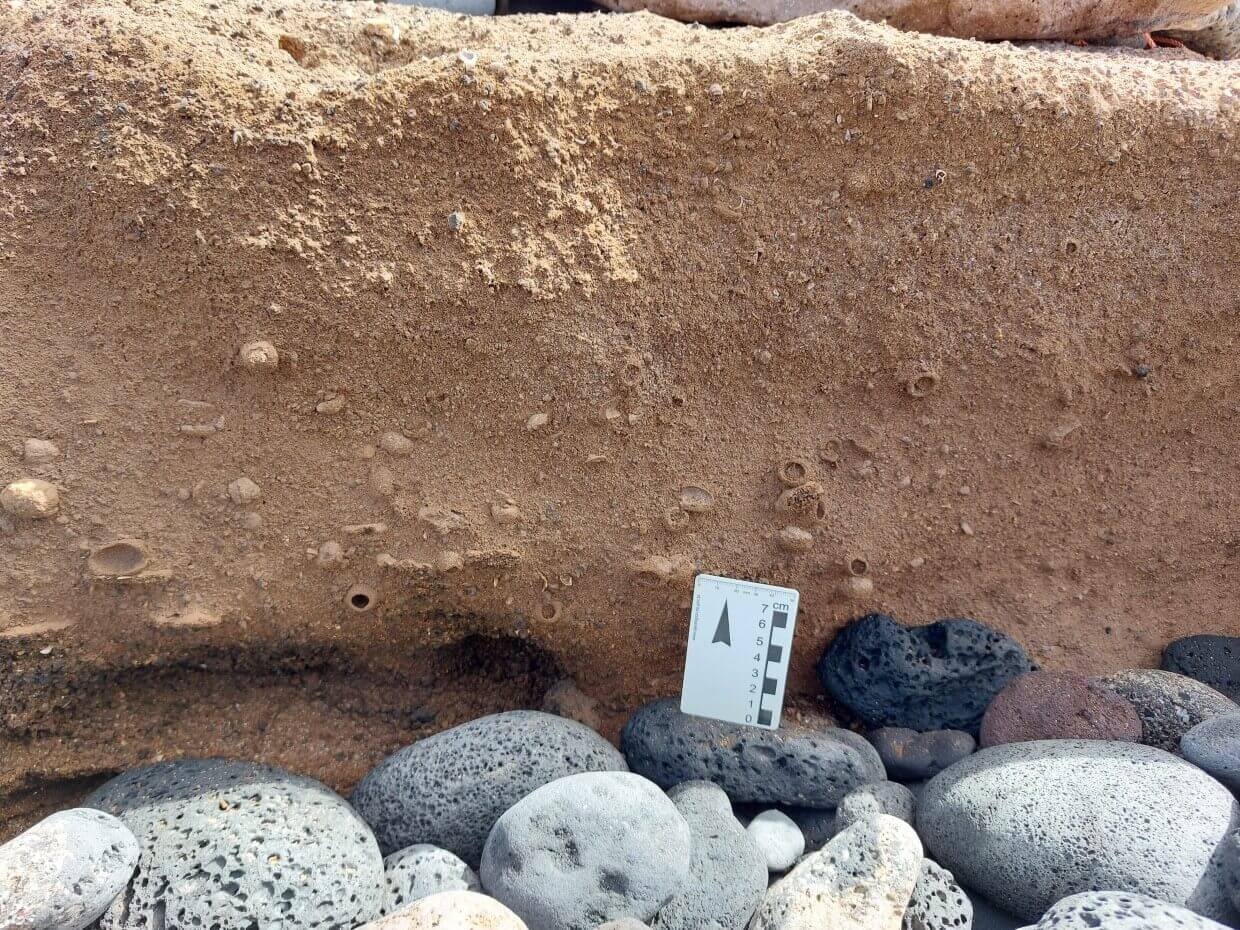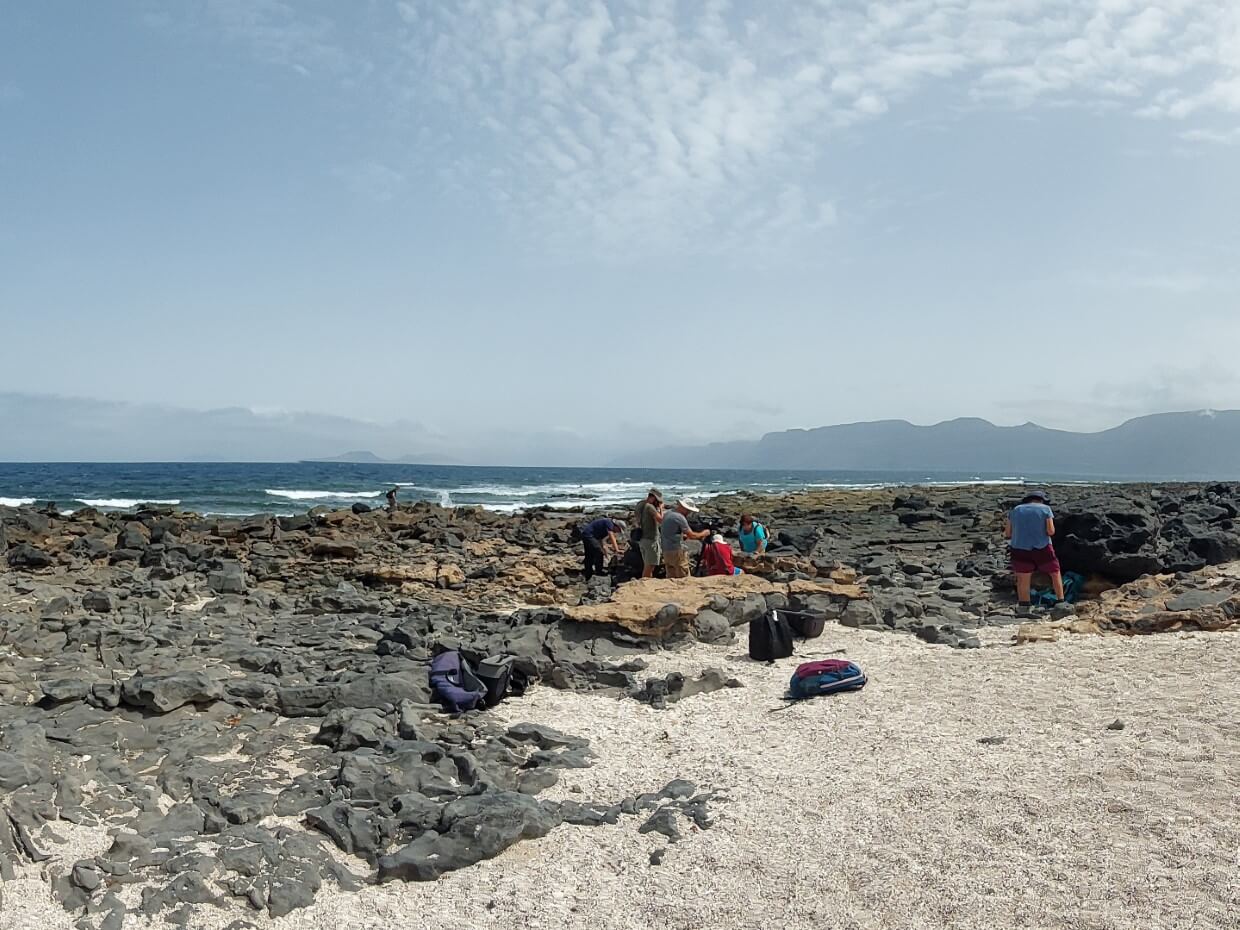Canárias
O arquipélago das Canárias corresponde a um conjunto de sete grandes ilhas vulcânicas e quatro ilhas/ilhéus mais pequenos, com as idades entre 23 Ma em Fuerteventura e 1,1 Ma em El Hierro (Bogaard, 2013). As ilhas estão localizadas perto da costa africana (Lanzarote a apenas ~97 km), entre as latitudes 27°30′ e 29°24′ N, e as longitudes 18°09′ e 13°20′ O.
As Ilhas Canárias resultaram de vulcanismo Neogénico e do Quaternário (Ancochea et al., 2004; King, 2007; Gurenko et al., 2010). Quatro das sete ilhas apresentam depósitos fossilíferos marinhos, cujas idades vão desde o Pliocénico até ao Holocénico. No que diz respeito ao Pleistocénico, existem afloramentos registados da fase isotópica marinha 11 (MIS 11, ~400 ka), MIS 9 (~320 ka) e MIS 5e (Zazo et al., 2002; Johnson et al., 2012; Montesinos et al., 2014; Maréchal et al., 2020).
Os depósitos fossilíferos do Último Interglaciar foram descritos a partir de altitudes que variam entre -0,5 m e +2 m (Zazo et al., 2002), o que dificulta o uso da altimetria como método de datação ou identificação destes afloramentos como indicadores bioestratigráficos.
Explore a Paleobiodiversidade das Canárias
Bibliografia
ANCOCHEA, E., J.L. BARRERA, F. BELLIDO, R. BENITO, L. BRANDLE, M. CEBRIA, J. COELLO, C.R. CUBAS, J. DE LA NUEZ, M. DOBLAS, J.A. GÓMEZ, F. HERNÁN, R. HERRERA, M.J. HUERTAS, J. LÓPEZ RUIZ, J. MARTÍ, M. MUÑOZ & J. SAGREDO, 2004. Canarias y el Vulcanismo Neógeno peninsular. In: VERA, J.A. (Ed.), Geología de España. SGEIGME, Madrid, pp. 635–682.
BOGAARD, P., 2013. The origin of the Canary Island Seamount Province d new ages of old seamounts. Scientific Reports, 3: 2107.
CARRACEDO, J.C. & V.R. TROLL, 2016. The Geology of the Canary Islands, first ed. Elsevier, Amsterdan, p. 621.
GELDMACHER, J., K. HOERNLE, P. BOGAARD, S. DUGGEN & R. WERNER, 2005. New 40 Ar/39 Ar age and geochemical data from seamounts in the Canary and Madeira volcanic provinces: support for the mantle plume hypothesis. Earth and Planetary Science Letters, 237 (1): 85–101.
GURENKO, A.A., K.A. HOERNLE, A.V. SOBOLEV, F. HAUFF & H.-U. SCHMINCKE, 2010. Source components of the Gran Canaria (Canary Islands) shield stage magmas: evidence from olivine composition and Sr-Nd-Pb isotopes. Contributions to Mineralogy and Petrology, 159: 689–702.
JOHNSON, M.E., GUDVEIG BAARLI, B., M. CACHÃO, C.M. DA SILVA, J. LEDESMA-VÁZQUEZ, E.J. MAYORAL, R.S. RAMALHO & A. SANTOS, 2012. Rhodoliths, uniformitarianism, and Darwin: Pleistocene and Recent carbonate deposits in the Cape Verde and Canary archipelagos. Palaeogeography, Palaeoclimatology, Palaeoecology, 329–330: 83–100.
KING, S.D., 2007. Hotspots and edge-driven convection. Geology, 35 (3): 223–226.
MARÉCHAL, C., A., BOUTIER, M.-A. MÉLIÈRES, T. CLAUZEL, J.F. BETANCORT, A. LOMOSCHITZ, J. MECO, F. FOUREL, A. BARRAL, R. AMIOT & C. LÉCUYER, 2020. Last interglacial Sea Surface warming during the Sea-level highstand in the Canary Islands: implications for the canary current and the upwelling off African coast. Quaternary Science Reviews, 234: 106246.
MONTESINOS, M., A.J.G. RAMOS, A. LOMOSCHITZ, J. COCA, A. REDONDO, J.F. BETANCORT & J. MECO, 2014. Extralimital Senegalese species during marine isotope stages 5.5 and 11 in the Canary Islands (29° N): Sea Surface temperature estimates. Palaeogeography, Palaeoclimatology, Palaeoecology, 410: 153–163.
ZAZO, C., J.L. GOY, C. HILLAIRE-MARCEL, P.Y. GILLOT, V. SOLER, J.A. GONZÁLEZ, C.J. DABRIO & B. GHALEB, 2002. Raised marine sequences of Lanzarote and Fuerteventura revisited e a reappraisal of relative sea-level changes and vertical movements in the eastern Canary Islands during Quaternary. Quaternary Science Reviews, 21: 2019–2046.
Como citar:
MPDb (2023). Canárias. Base de dados da Paleobiodiversidade da Macaronésia. https://macpaleo.uac.pt/pt/


























